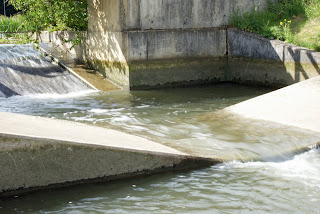For the first of these a subject that was clear in appearance and compact in shape had to be chosen, then a series of pictures taken, the first from a conventional viewpoint, the second had to fit the frame as tightly as possible, the third had to be right up close so that just a part of the subject was captured, for the fourth a more distant viewpoint had to be chosen and an attempt to compose a picture that stressed the surroundings.
Picture 1: Conventional viewpoint
Once again a visit to the local 'tourist' railway, many more of these visits and I will earn the reputation as a train spotter!!.
I think in comparison my pictures do have similarities with the ones given in the exercise. I think that the second shot would have benefited from a tighter fit, a bit of careful cropping would rectify this. With the third picture I tried to emphasise the levers inside the signal box to try demonstrate the subject when only part of it is visible. On the last picture I tried to create a picture that demonstrated the surroundings, so I introduced the track and the old train carriage into the scene. I have tried various 'crops' of the final scene and have found a couple that work.

























